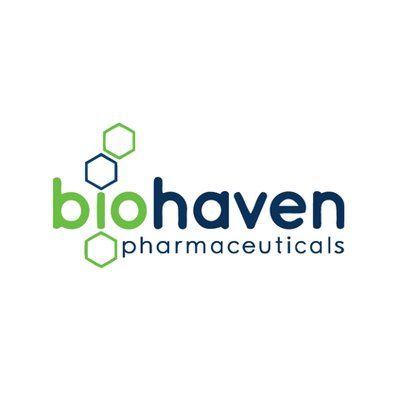预约演示
更新于:2025-05-07
Metallothionein
更新于:2025-05-07
基本信息
别名- |
简介- |
关联
5
项与 Metallothionein 相关的药物作用机制 金属硫蛋白抑制剂 [+1] |
在研机构 |
非在研适应症- |
最高研发阶段临床前 |
首次获批国家/地区- |
首次获批日期1800-01-20 |
靶点 |
作用机制 MT2调节剂 |
非在研适应症- |
最高研发阶段临床前 |
首次获批国家/地区- |
首次获批日期1800-01-20 |
作用机制 金属硫蛋白抑制剂 [+1] |
非在研适应症- |
最高研发阶段临床前 |
首次获批国家/地区- |
首次获批日期1800-01-20 |
2
项与 Metallothionein 相关的临床试验ACTRN12622001025729
A Phase 1, Single-Arm, Exploratory Open-Label Study Investigating Safety, Tolerability, and Pharmacokinetics of Subcutaneously Administered EmtinB in Healthy Adult Volunteers
开始日期2024-01-23 |
ACTRN12622001019796
A Phase 1, Randomized, Double-Blind, Placebo Controlled, Dose-Escalation Study Investigating Safety and Tolerability and Pharmacokinetics of Subcutaneously Administered EmtinB in Healthy Adult Volunteers
开始日期2023-09-07 |
100 项与 Metallothionein 相关的临床结果
登录后查看更多信息
100 项与 Metallothionein 相关的转化医学
登录后查看更多信息
0 项与 Metallothionein 相关的专利(医药)
登录后查看更多信息
10,985
项与 Metallothionein 相关的文献(医药)2025-12-01·Endocrine Pathology
Comprehensive Gene Expression Analysis in Papillary Thyroid Carcinoma Reveals a Transcriptional Profile Associated with Reduced Radioiodine Avidity
Article
作者: Nilsson, Joachim N ; Ihre-Lundgren, Catharina ; Juhlin, C Christofer ; Condello, Vincenzo ; Marchettini, Carlotta
2025-12-01·Molecular Biology Reports
Cellular signalling of melatonin and its role in metabolic disorders
Review
作者: Tripathy, Snehasis ; Bhattamisra, Subrat Kumar
2025-11-01·Neural Regeneration Research
Copper homeostasis and neurodegenerative diseases
Article
作者: Wang, Yuanyuan ; Li, Daidi ; Xu, Kaifei ; Zhang, Feng ; Wang, Guoqing
30
项与 Metallothionein 相关的新闻(医药)2025-04-16
DRUGAI今天为大家介绍的是来自清华大学张学工教授所带领的团队发表的一篇论文。细胞调控是一个复杂的系统,涉及从单个基因的调控到多个基因之间的相互作用等多个层面。虽然目前已有一些神经网络模型可以将分子变化与细胞特征联系起来,但这些模型在设计上缺乏对调控机制的考虑,难以解释细胞状态转换等关键生命活动背后的调控机制。为解决这一问题,研究团队开发了一个名为regX(Regulatory Network)的深度神经网络。这个模型的特点是同时考虑了基因层面的调控和基因之间的相互作用机制,能够找出推动细胞状态改变的关键调控因子,并对其作用机制进行解释。研究人员将regX应用于2型糖尿病和毛囊发育的单细胞多组学数据分析中。结果表明,该模型能够准确识别出影响细胞状态变化的关键转录因子和重要的DNA调控区域。更重要的是,研究发现的一些调控因子为疾病治疗提供了新的靶点,同时也为已有药物的新用途开发和致病基因变异(单核苷酸多态性)的鉴定提供了线索。这项研究展示了如何通过设计可解释的神经网络模型,来更好地理解和揭示生物系统的运作机制。细胞是一个复杂的调控系统,包含多个层次的调控过程。在单个基因层面,有表观遗传调控(Epigenetic Regulation)、转录调控(Transcriptional Regulation)和翻译调控(Translational Regulation);在更高层面,还存在基因之间的相互作用和信号通路。开发能够模拟这种多层次细胞系统的计算方法,对于深入理解细胞功能的分子机制、细胞命运决定以及细胞调控的可能性具有重要意义。近年来,多个研究团队开发了具有生物学意义的神经网络模型,用于研究多层次生物系统。这些模型在科学发现方面取得了显著成果。然而,现有模型都忽略了一个重要方面:它们没有考虑DNA包装结构变化(染色质重塑)和蛋白质与DNA的结合(转录因子结合)等基础调控过程,而这些过程对于细胞发育和疾病进展过程中的变化至关重要。为此,研究团队开发了regX(Regulatory Network)深度神经网络模型。这个模型的独特之处在于它同时考虑了基因层面的调控和基因之间的相互作用机制。研究人员将该模型应用于两个研究案例:2型糖尿病的疾病进展和毛囊发育的过程,分析它们的单细胞多组学数据。研究结果显示,regX能够可靠地识别出关键的转录因子(TF)和重要的DNA调控区域(cCRE)。特别是在2型糖尿病研究中,模型发现的一些重要调控因子不仅提供了新的治疗靶点和药物开发思路,还帮助发现了一些可能导致疾病的基因变异位点。这些发现为解读全基因组关联研究(GWAS)的结果提供了新的视角,这也是当前基因组研究领域的一个重要课题。此外,在毛囊发育研究中也获得了一些有价值的生物学发现。模型架构图 1研究团队设计了一个基于生物学机制的神经网络,用于预测细胞状态。如图1a所示,该网络通过分析DNA调控区域(cCRE)和转录因子(TF)的数据来实现预测。在网络的隐藏层中,研究人员嵌入了目标基因、蛋白质和功能信息,作为调控细胞状态的重要途径。为了模拟基因表达过程,研究团队创新性地开发了一个可学习的转录活性矩阵(Transcriptional Activity Matrix, TAM)。这个矩阵通过计算转录因子表达量、DNA可及性区域的开放程度,以及从数据中学习得到的转录因子-DNA相互作用三者的乘积,来描述转录因子如何通过与基因周围的开放染色质区域相互作用来调控基因表达。为了模拟基因间的相互作用,研究人员使用了图神经网络(Graph Neural Network, GNN)来整合蛋白质之间的相互作用网络或基因功能分类(Gene Ontology, GO)之间的关系。这种设计理念认为,蛋白质相互作用网络和基因功能分类图谱都是从不同角度对基因间真实关系的合理抽象。如图1b所示,研究人员通过计算机模拟扰动(in-silico perturbation)的方式,来识别在细胞状态转换过程中起关键作用的转录因子和DNA调控区域。具体方法是比较在给定扰动前后,细胞状态概率的变化程度。得益于基于机制的设计,研究人员还能够通过分析目标基因表达水平的变化,来确定这些关键调控因子的作用靶点。如图1c和图1d所示,研究团队将regX应用于两个单细胞多组学数据集的分析。第一个是使用10x multiome技术对人类胰腺β细胞进行测序的2型糖尿病数据集,样本来自非糖尿病、糖尿病前期和糖尿病患者。第二个是使用SHARE-seq技术对小鼠毛囊发育过程中的皮肤细胞进行测序的数据集。考虑到人类数据在后续分析中有更丰富的资源可用,研究重点使用2型糖尿病数据集来展示regX在识别关键调控因子方面的特点和能力,以及这些发现的机制和治疗意义。而毛囊发育数据集则用于展示regX在结构上的灵活性和通用性,以及其在量化调控因子对细胞命运决定影响方面的优势。数据驱动的转录调控模型捕获了TF-cCRE的相互作用研究团队创新性地设计了转录活性矩阵(TAM),这是整个神经网络的基石。不同于简单地将转录因子表达量和DNA可及性数据拼接在一起,TAM通过一种全新的方式整合了这些信息。这种设计基于一个重要认识:转录因子的浓度(通过表达水平体现)、DNA调控区域的开放程度,以及转录因子与DNA之间的相互作用强度,这三个要素在生物学过程中是密不可分的。图 2如图2a所示,研究人员通过预测667个差异表达基因的表达水平来评估TAM的性能。使用皮尔逊相关系数(Pearson Correlation Coefficient, PCC)进行评估,TAM模型达到了0.83的平均相关系数,显著优于其他特征组合方法。图2b的结果表明,模型学习到的转录因子与DNA调控区域之间的相互作用在重复实验中表现出很好的稳定性。更有趣的是,如图2c-e所示,研究人员比较了模型学习到的相互作用强度与基于DNA序列预测的结合能力。结果发现,对于每个目标基因,平均有6.1(±2.5)%的转录因子表现出与序列预测一致的结合模式。特别是,那些具有较长DNA识别序列和较高GC碱基含量的转录因子,往往表现出更强的序列特异性结合能力。这可能是因为这类转录因子在结构上更稳定,与DNA的结合更依赖于特定的序列特征。相反,具有较短识别序列和较低GC含量的转录因子则可能倾向于以蛋白质复合物的形式间接与DNA相互作用。为了进一步验证模型的可靠性,研究人员使用了三个外部单细胞多组学数据集(SNARE-seq、PBMC 10x multiome和DPCL)进行测试,并与现有的领先方法(SCENIC+和LINGER)进行比较。虽然TAM的设计初衷不是构建完整的基因调控网络,而是识别在特定数据中起重要作用的调控关系,但评估结果显示,TAM在准确性指标(F1 score)上仍然显著优于现有方法。特别是在识别最重要的转录因子-DNA调控区域相互作用方面,TAM表现出更高的精确度。regX优先考虑潜在驱动β细胞过渡的TFs研究团队使用regX模型分析了2型糖尿病发展过程中胰腺β细胞的状态变化。模型在细胞状态预测方面表现出色,准确率评分(F1 score)达到0.960±0.012。图 3如图3a-h所示,通过计算机模拟实验,研究人员识别出23个可能驱动细胞状态转换的关键转录因子。这些因子中,21个在先前研究中已被证实与β细胞功能或2型糖尿病有关,其中10个是36种处方药、研究性药物或膳食补充剂的直接或间接作用靶点。研究发现了两个特别值得关注的发现:首先,如图3i-j所示,研究揭示了一个有趣的药物重新利用案例。溴隐亭(Bromocriptine)原本用于治疗泌乳素过高、肢端肥大症和帕金森病,后来被发现可以用于辅助治疗2型糖尿病,但其作用机制一直不明确。regX模型的分析表明,溴隐亭可能通过与FOS基因相互作用,激活金属硫蛋白(Metallothionein)等抗氧化基因,从而减轻细胞的氧化应激,帮助恢复胰岛素的产生。其次,如图3k-l所示,研究发现了一个潜在的新型治疗靶点TRPS1。模型预测,抑制TRPS1可以促进多个重要基因的表达,这些基因能够帮助细胞应对蛋白质折叠压力(内质网应激),并促进胰岛素分泌。虽然这些基因表达的变化幅度相对较小,但多个基因的协同作用可能产生显著的治疗效果。表1:23个潜在驱动转录因子(pdTFs)在计算机模拟下调和上调实验中的信息表1总结了这23个关键转录因子与现有药物和疾病的关联。这些发现不仅帮助解释了某些药物的作用机制,还为开发新的治疗方案提供了方向。特别是,那些已知作用于这些转录因子的药物可能具有治疗2型糖尿病的潜力,值得进一步研究。不过,对于新发现的治疗靶点如TRPS1,还需要更多的实验验证来评估其临床应用价值。排名靠前的调控因子揭示2型糖尿病两类潜在致病SNPs图 4在全基因组关联研究(Genome-Wide Association Study, GWAS)领域,区分基因变异与疾病之间的因果关系一直是一个重要问题。如图4a所示,研究团队提出假设:那些影响疾病关键调控因子的基因变异位点很可能是导致疾病的原因。基于这一假设,研究人员利用regX模型发现了两类可能导致2型糖尿病的DNA变异位点(putative causal SNPs, pcSNPs)。研究团队分析了2,441个与2型糖尿病相关的基因变异位点,最终确定了5个此前未被报道的重要pcSNPs。这些DNA变异可以分为两类:第一类是通过影响关键转录因子表达的pcSNPs。如图4b所示,以rs10974438为例,当这个位点发生从A到C的变异时,会降低多个转录激活因子与DNA的结合能力,导致GLIS3基因表达降低。GLIS3表达的减少会促进胰腺β细胞的死亡并减少胰岛素分泌,最终增加2型糖尿病的风险。第二类是通过改变DNA的可及性来发挥作用的pcSNPs。如图4c所示,以rs4655617为例,当这个位点从A变为C时,会增加特定DNA区域的开放程度,从而提高SGIP1基因的表达。研究推测,SGIP1蛋白可能通过影响细胞的物质摄取过程(内吞作用),干扰胰岛素的正常分泌。当血糖升高时,SGIP1表达增加的细胞可能无法正常应对,增加了发生2型糖尿病的风险。这些发现不仅帮助解释了基因变异如何导致2型糖尿病,还为开发新的治疗方法提供了方向。特别是对SGIP1的新发现,为进一步研究2型糖尿病的发病机制提供了新的视角。这些结果也证明了regX模型在揭示生物学机制方面的优势和可靠性。regX识别毛囊发育过程中决定细胞命运的关键转录因子图 5研究团队将regX模型应用于毛囊发育研究。如图5a所示,研究关注了毛囊发育过程中的几种关键细胞类型:瞬时扩增细胞(Transit-Amplifying Cells, TACs)、内根鞘细胞(Inner Root Sheath, IRS)、毛干角质层/皮质层细胞和髓质细胞。这个数据集与之前的2型糖尿病数据集有几个显著区别:它来自小鼠样本,使用了不同的测序技术,并且研究重点是发育过程而非疾病。研究团队创新性地利用基因本体论(Gene Ontology, GO)数据库中与毛囊发育相关的12个功能类别,构建了一个有向无环图来描述这些功能之间的关系。如图5b-c所示,研究人员对模型结构进行了优化,引入了图注意力层(Graph Attention Layer, GAT),这种结构能够更好地捕捉基因之间的复杂关系。模型不仅可以预测细胞的离散状态,还能预测细胞发育的连续时间进程。评估结果显示,这种改进的模型结构在预测准确性上显著优于传统方法。通过计算机模拟实验,研究团队识别出了控制毛囊发育的关键转录因子。如图5d-g所示,其中最重要的发现是关于Lef1和Gata3这两个转录因子的作用机制:Gata3的表达增加会明确地引导瞬时扩增细胞向内根鞘细胞发育;Lef1的作用则更为复杂:只有在高度激活时才能引导瞬时扩增细胞向毛干细胞发育;不同的激活水平会导致细胞发育成不同类型的毛干细胞:高水平促进角质层/皮质层细胞的形成,低水平则倾向于形成髓质细胞。这些发现突显了regX模型的独特优势:它不仅能识别关键的调控因子,还能定量分析这些因子的表达水平如何影响细胞的发育命运。这种深入的机制解析对于理解毛囊发育过程和开发相关治疗方法具有重要意义。讨论regX是一个创新的深度学习模型,通过整合多层次的调控过程来研究细胞系统。该模型将转录因子表达、染色质可及性和蛋白质相互作用等生物学机制融入网络设计,可以预测细胞状态转换并识别关键调控因子。研究团队将regX应用于2型糖尿病和毛囊发育研究,不仅发现了新的治疗靶点和药物重新利用的可能性,还揭示了基因变异导致疾病的潜在机制。尽管模型仍有改进空间,但这项工作为分析单细胞多组学数据和理解复杂生物过程提供了新的研究范式。编译|于洲审稿|王梓旭参考资料Xi X, Li J, Jia J, et al. A mechanism-informed deep neural network enables prioritization of regulators that drive cell state transitions[J]. Nature Communications, 2025, 16(1): 1284.
2025-03-03
– Eton expects to significantly expand patient access to this critical treatment for Wilson disease patients – – $0 co-pay for all eligible patients and best-in-class patient support services – – Now available exclusively through Optime Care –
DEER PARK, Ill., March 03, 2025 (GLOBE NEWSWIRE) -- Eton Pharmaceuticals, Inc (“Eton” or the “Company”) (Nasdaq: ETON), an innovative pharmaceutical company focused on developing and commercializing treatments for rare diseases, today announced that it has launched Galzin® (zinc acetate) capsules. Galzin is FDA-approved for the maintenance treatment of patients with Wilson disease who have been initially treated with a chelating agent. It is the only FDA-approved zinc therapy for Wilson disease.
“We are excited to launch Galzin with our dedicated sales force and robust Eton Cares patient support services. Due to historic availability and affordability challenges, many patients have turned to unapproved compounded products or over-the-counter supplements to manage their Wilson disease. We are dedicated to increasing both access to and awareness of this critical medication. Through Eton Cares, we intend to ensure that every patient that needs Galzin will have access to it,” said Sean Brynjelsen, CEO of Eton Pharmaceuticals. “As part of our commitment to the Wilson disease community, Eton is also actively investing in further research and development in an effort to drive meaningful advancements in treatment.”
“Galzin is an important medication for Wilson disease patients, and we look forward to partnering with Eton to ensure patients have continued access to this drug,” said Rhonda Rowland, President, Wilson Disease Association.
Galzin is now available exclusively through Optime Care, a specialty pharmacy dedicated to helping patients with rare diseases manage their conditions. Optime Care will administer the Eton Cares Program in partnership with Eton Pharmaceuticals. The program will provide prescription fulfillment, insurance benefits investigation, educational support, and qualified patient financial assistance, along with other services designed to help eligible patients access treatment. Eton Cares will offer $0 co-pay for all eligible patients.
Clinicians seeking to prescribe Galzin can e-prescribe by selecting Optime Care as the pharmacy or fax in a patient referral form to 866-318-2990. Additional product details can be found on the product website, www.galzin.com.
IMPORTANT SAFETY INFORMATION
Warning and Precautions
Copper Deficiency: Several postmarketing cases reported that zinc acetate taken over extended periods of time (i.e., months to years) may result in decreased enteral copper absorption and copper deficiency. The cases reported the following complications of copper deficiency: anemia, granulocytopenia, leukopenia, neutropenia, pancytopenia, thrombocytopenia, and myeloneuropathy. If a patient develops signs and/or symptoms of copper deficiency during treatment with zinc acetate, interrupt zinc treatment and measure zinc, 24-hr urinary copper, and non-ceruloplasmin bound copper (NCC) levels. Consider restarting zinc acetate treatment based on periodic monitoring of 24-hr urinary copper and NCC levels. Gastric Ulcer: There have been postmarketing reports of gastric ulcers with long-term use of zinc acetate. The cases reported the complications of anemia and gastric ulcer perforation with peritonitis. In some cases, ulcers persisted after treatment until zinc acetate was discontinued. If a patient develops signs and/or symptoms of gastric ulcer during treatment with zinc acetate, discontinue zinc treatment. Most patients showed improvement after cessation of zinc treatment.
General: Zinc acetate is not recommended for the initial therapy of symptomatic patients because of the delay required for zinc-induced increase in enterocytic metallothionein and blockade of copper uptake. Symptomatic patients should be treated initially, using chelating agents. During initial therapy, neurological deterioration may occur as stores of copper are mobilized. Once initial therapy has been completed, and the patient is clinically stable, maintenance treatment with zinc acetate can be considered, but patients may be continued on initial therapy as clinically indicated. Information for Patients: Patients should take GALZIN® on an empty stomach, at least one hour before or two to three hours after meals. Capsules should be swallowed whole, not opened or chewed. In the rare event of gastric intolerance of zinc, generally occurring with the morning dose, this dose may be taken between breakfast and lunch. Patients must be clinically monitored to determine the adequacy of zinc acetate therapy. Since strict adherence to the zinc regimen is essential for optimal control of copper distribution and metabolism, the physician must reinforce the need for compliance at each contact with the patient. Monitoring Patients: Patients should be monitored primarily by assessment of existing signs and symptoms of Wilson’s disease and 24-hour urine copper. Neuropsychiatric evaluations including speech as well as liver function tests including bilirubin and aminotransferases, should be done as appropriate.
Adverse Reactions
The following adverse reactions associated with the use of zinc acetate were identified from postmarketing reports. Because these reactions were reported voluntarily from a population of uncertain size, it is not possible to reliably estimate their frequency or establish a causal relationship to drug exposure.
Gastrointestinal disorders: gastric irritation
Investigations: elevations of serum alkaline phosphatase, amylase, and lipase lasting from weeks to months suggesting pancreatitis; the levels usually return to high normal within the first one or two years of zinc therapy.
INDICATION
Zinc acetate therapy is indicated for maintenance treatment of patients with Wilson’s disease who have been initially treated with a chelating agent
Please see Full Prescribing Information for more information.
About Eton Pharmaceuticals Eton is an innovative pharmaceutical company focused on developing and commercializing treatments for rare diseases. The Company currently has seven commercial rare disease products: INCRELEX® (mecasermin) injection, ALKINDI SPRINKLE® (hydrocortisone) oral granules, GALZIN® (zinc acetate) capsules, PKU GOLIKE®, Carglumic Acid tablets, Betaine Anhydrous oral solution, and Nitisinone capsules. The Company has four additional product candidates in late-stage development: ET-400, ET-600, Amglidia® (glyburide oral suspension), and ZENEO® hydrocortisone autoinjector. For more information, please visit our website at www.etonpharma.com.
Forward-Looking Statements Statements contained in this press release regarding matters that are not historical facts are “forward-looking statements” within the meaning of the Private Securities Litigation Reform Act of 1995, including statements associated with the expected ability of Eton to undertake certain activities and accomplish certain goals and objectives. These statements include but are not limited to statements regarding Eton’s business strategy, Eton’s plans to develop and commercialize its product candidates, the safety and efficacy of Eton’s product candidates, Eton’s plans and expected timing with respect to regulatory filings and approvals, and the size and growth potential of the markets for Eton’s product candidates. Because such statements are subject to risks and uncertainties, actual results may differ materially from those expressed or implied by such forward-looking statements. Words such as “believes,” “anticipates,” “plans,” “expects,” “intends,” “will,” “goal,” “potential” and similar expressions are intended to identify forward-looking statements. These forward-looking statements are based upon Eton’s current expectations and involve assumptions that may never materialize or may prove to be incorrect. Actual results and the timing of events could differ materially from those anticipated in such forward-looking statements as a result of various risks and uncertainties, which include, without limitation, risks associated with the process of discovering, developing and commercializing drugs that are safe and effective for use as human therapeutics, and in the endeavor of building a business around such drugs. These and other risks concerning Eton’s development programs and financial position are described in additional detail in Eton’s filings with the Securities and Exchange Commission. All forward-looking statements contained in this press release speak only as of the date on which they were made. Eton undertakes no obligation to update such statements to reflect events that occur or circumstances that exist after the date on which they were made.
Investor Relations:
Lisa M. Wilson, In-Site Communications, Inc. T: 212-452-2793 E: lwilson@insitecony.com
Source: Eton Pharmaceuticals, Inc.
Source: Eton Pharmaceuticals
临床结果上市批准
2025-02-27
关注并星标CPHI制药在线
褪黑素是一种主要由松果体产生的神经内分泌激素,同时也可由其他组织或细胞产生,如肠道、睾丸、骨髓、视网膜、胃肠道、唾液腺和人类淋巴细胞等。褪黑素的分泌有昼夜节律,褪黑素的夜间产生主要由位于下丘脑视交叉上核的昼夜节律时钟驱动,当视网膜感光神经节细胞受到光刺激时,褪黑素的合成和分泌减少,直到不再分泌为止,一般来说,褪黑素主要在夜间合成,其峰值血浆浓度在3 点至4 点,随后逐渐下降,而随着机体衰老,褪黑素的产生也逐渐减少。
褪黑素可通过受体和非受体介导的方式产生影响,在哺乳动物中,褪黑素通过与质膜受体、钙调素或孤儿核受体结合而发挥作用,而在动物细胞中,褪黑素主要通过膜结合的G 蛋白偶联受体发挥作用。目前已在哺乳动物中克隆了两种G蛋白偶联的褪黑素受体,包括褪黑素受体1(melatonin receptor 1,MT1)和褪黑激素受体 2(melatonin receptor 2,MT2),MT1 受体也称为Mell a受体,Mell a广泛分布于下丘脑的结节部和视交叉上核(suprachiasmatic nucleus,SCN),褪黑素与靶细胞中G蛋白偶联受体超家族的这些高亲和力受体的结合导致腺苷酸环化酶/环磷酸腺苷活性的抑制,并增加磷脂酶C/三磷酸肌醇的作用,参与细胞内信号转导过程。MT1 受体有两个亚群,MT1a 和 MT2b,在血管中,表达 MT1 受体的SCN 有助于调节昼夜节律和收缩血管,而MT2 受体,也称为 Mell b 受体,具有低亲和力,并参与磷酸肌醇水解、昼夜节律调节、血管扩张和炎症反应。
褪黑素是一种强大的抗氧化剂,与其代谢产物可直接清除自由基,褪黑素高度集中在线粒体中,可保护蛋白质、脂质,以及自由基引起的氧化损伤的DNA。此外,褪黑素能促进成骨细胞、软骨细胞和血管内皮细胞的增殖和分化,抑制骨吸收,限制氧化应激,有望成为多种骨病的主要或辅助治疗策略,在骨领域具有非常高的研究价值。
1、褪黑素具有抗炎和抗氧化功能
自由基的产生是骨降解的关键事件,有助于骨降解过程。褪黑素是直接的自由基清除剂和间接的抗氧化剂,通过激活抗氧化防御系统,维持骨髓间充质干细胞在长期传代后的自我更新和分化。当褪黑素在一定浓度下,其促成骨、抗炎和抗氧化作用可发挥到极 致。高葡萄糖环境会降低细胞活力并诱导细胞凋亡,而褪黑素可以影响 PERK-eIF 2 α-ATF 4-CHOP 信号通路减少内质网应激诱导的细胞凋亡,从而保护成骨细胞免受高糖诱导的变化。褪黑素也能缓解糖皮质激素所致的成骨分化障碍,这是通过骨形态发生蛋白/Smad 信号通路,并伴随由 Smurf2 介导的泛素化途径参与实现的。褪黑素在Akt/Nrf 2/HO-1 信号通路的激活也能缓解糖皮质激素诱导的成骨细胞凋亡,预防和改善糖皮质激素引起的骨质丢失。此外,褪黑素上调SIRT1/Nrf2/ 转化生长因子β/ 骨形态发生蛋白的表达,同时抑制核因子κB 通路和软骨基质降解的能力,表明褪黑素在减缓软骨退化和调节软骨再生方面的潜力。褪黑素的应用不仅能减轻实验诱导的大鼠根尖周炎的炎症并减少骨吸收,还有助于控制高脂饮食大鼠的根尖周炎病变。在小鼠的牙周炎模型中,褪黑素衍生碳点 (melatonin-derivedcarbon dots,MT-CDs)可通过调节 Nrf2/HO-1 信号通路来清除活性氧,防止细胞损伤和炎症因子的产生,缓解牙槽骨的退缩。
2、褪黑素对成骨细胞的作用机制
① 褪黑素与成骨细胞分化
成骨细胞来源于间充质干细胞,其分化能力在骨骼发育过程中发挥重要作用。在动物及细胞实验中,通过检测血清中成骨分化相关生物标志物如碱性磷酸酶(ALP)、Ⅰ型前胶原氨基端原肽(PINP)、骨钙素(OCN)、成骨特异性转录因子2(RUNX2)、成骨相关转录因子抗体(osterix)含量以及蛋白质表达量的变化,发现使用褪黑素干预成骨细胞后分化相关生物标志物的表达增加。研究褪黑素干预地塞米松对成骨细胞分化的抑制作用时发现,PI3K/AKT通路的P-AKT蛋白以及BMP/Smad信号通路关键蛋白P-Smad 1/5/9表达升高,在使用PI3K/AKT通路抑制剂MK2206时,P-AKT 和P-Smad 1/5/9蛋白表达均降低,而应用BMP/Smad信号通路抑制剂LDN193189时,P-Smad 1/5/9蛋白表达降低,P-AKT无影响,说明褪黑素可通过PI3K/AKT、BMP/Smad信号通路缓解地塞米松对成骨细胞分化与矿化的抑制作用,并且PI3K/AKT信号可能是BMP/Smad信号的上游信号。
研究表明,Wnt信号通路作为BMP的下游,可以调节骨形成中的分化和矿化,Wnt配体与其受体结合,导致β⁃catenin易位到细胞核中,进而增强成骨细胞靶基因的表达。此外,糖原合酶激酶3β(GSK-3β)可以在没有Wnt配体的情况下诱导β⁃catenin的蛋白酶体降解,通过负性调控Wnt/ β⁃catenin信号传导间接影响成骨细胞的分化。研究发现褪黑素干预可激活成骨分化标志物Runx2、OCN等,成骨细胞中Wnt7b、β⁃catenin的mRNA以及蛋白的含量明显升高,同时激活 Wnt5α/ β、β⁃catenin磷酸化,使GSK-3β 的磷酸化降低,表明褪黑素通过直接/间接激活Wnt/β⁃catenin信号通路来促进成骨细胞的分化。而且褪黑素激活成骨细胞中Wnt5α/ β、β⁃catenin,抑制GSK-3β,可以被BMP抑制剂Noggin和ERK抑制剂PD98059所逆转,表明BMP、ERK可以从上游调控Wnt/β⁃catenin 通路,进一步说明褪黑素通过BMP/ERK/Wnt途径促进成骨细胞的成骨分化和矿化。
研究还发现褪黑素刺激了MAPK家族中C-JunN⁃末端激酶(JNK)、细胞外信号调节激酶(ERK)、P38丝裂原活化蛋白激酶(P38 MAPK)的磷酸化,表明褪黑素促进成骨细胞的分化也与MAPK信号通路有关。还有研究表明,成骨细胞中miR-497-5p 的过表达可增强ALP活性,增加OCN、COL-Ⅰ蛋白的表达水平及骨矿化面积,证明了miR-497-5p对成骨细胞的分化和骨基质矿化的促进作用,其机制可能与对Smurf2的负靶向调控有关。
② 褪黑素与成骨细胞自噬
细胞自噬是对细胞内待降解的蛋白质、细胞器等进行包裹,形成自噬小体后依赖溶酶体进行降解,从而进行代谢循环和能量的更新利用。维持适当水平的自噬有利于细胞生理的稳态,但过量的自噬会对细胞造成损伤甚至凋亡。研究表明钛离子干预成骨细胞后,通过降低SIRT 3的表达,使SOD 2活性下降,引起线粒体内ROS水平升高,导致细胞发生自噬。褪黑素干预后SIRT3 蛋白表达升高,恢复了SOD 2的活性,进而发挥SOD 2对ROS的降解作用,使线粒体活性氧(mROS)下降,自噬蛋白LC3-Ⅱ表达降低,自噬体减少,细胞活性恢复,表明褪黑素对钛离子引起成骨细胞的自噬水平升高具有改善作用且此作用与调节线粒体内SIRT3/SOD2/mROS通路有关。
除了与氧化应激相关的SIRT3/SOD 2/mROS通路,研究人员还对Ras/Raf/MEK/ERK与 PI3K/AKT/mTOR两条经典的自噬调控信号通路进行了探索。细胞外信号调控的蛋白激酶(ERK)是MAPK家族中的一员,在一项应用人胎儿成骨细胞(Hfob119)进行的体外实验中,高糖导致自噬体形成的生物标志物微管相关蛋白轻链LC3和Beclin-1水平升高,p-ERK1/2蛋白表达增加,褪黑素干预后会使LC3、Beclin-1水平以及p-ERK1/2蛋白表达降低,表明褪黑素可以通过调节ERK通路来改善成骨细胞的自噬作用。
PI3K/AKT/mTOR通路主要包括磷脂酰肌3-激酶(PI3K)、AKT和哺乳动物雷帕霉素蛋白(mTOR)3个主要信号分子蛋白,其中mTOR对于调节成骨细胞的自噬水平至关重要。mTOR是氨基酸和ATP的感受器,在自噬过程中发挥门控作用,其活性是自噬体形成、成熟的关键。通过clinostat旋转模拟微重力作用于成骨细胞中,REK/AKT/mTOR蛋白的磷酸化水平显著降低,自噬蛋白LC3水平增加,增强了细胞自噬,但在使用褪黑素治疗后,可明显恢复ERK/AKT/ mTOR蛋白的磷酸化水平,使自噬蛋白LC3表达水平较前下降,并用竞争性褪黑激素受体拮抗剂卢吲哚处理后,发现可阻止褪黑激素诱导的LC3⁃Ⅱ水平下降。 说明褪黑素可通过增加ERK/AKT/ mTOR蛋白的磷酸化,使自噬体标志物的水平降低,从而对成骨细胞的自噬起到抑制作用。
不过,也有研究人员发现高浓度褪黑素会通过激活细胞膜钙离子通道,引起钙超载进而激活未折叠蛋白反应,导致发生内质网应激,从而对成骨细胞增殖产生抑制效应,激活自噬小体,自噬蛋白LC3-Ⅰ和LC3-Ⅱ表达增加,导致细胞自噬水平升高。其他实验也表明了高浓度褪黑素增强成骨细胞自噬的作用与抑制miR-200b的表达并增加MALAT1的表达有关。
参考资料:
[1]王颖,郝楠,谢戬芳.褪黑素在骨关节炎中作用机制的研究进展[J].安徽医学,2024,45(06):794-797.
[2]季明意,季欣意,徐俊峰.褪黑素促进骨再生机制及在口腔种植中的应用[J].中国组织工程研究,2025,29(18):3868-3876.
[3]李富华,张锦玉.褪黑素对成骨细胞作用机制的研究进展[J].中国骨质疏松杂志,2024,30(11):1678-1682.
作者简介:小泥沙,食品科技工作者,食品科学硕士,现就职于国内某大型药物研发公司,从事营养食品的开发与研究。
智药研习社近期直播预告
扫码领取CPHI & PMEC China 2025展会门票
来源:CPHI制药在线
声明:本文仅代表作者观点,并不代表制药在线立场。本网站内容仅出于传递更多信息之目的。如需转载,请务必注明文章来源和作者。
投稿邮箱:Kelly.Xiao@imsinoexpo.com
▼更多制药资讯,请关注CPHI制药在线▼
点击阅读原文,进入智药研习社~
临床2期临床1期引进/卖出
分析
对领域进行一次全面的分析。
登录
或

生物医药百科问答
全新生物医药AI Agent 覆盖科研全链路,让突破性发现快人一步
立即开始免费试用!
智慧芽新药情报库是智慧芽专为生命科学人士构建的基于AI的创新药情报平台,助您全方位提升您的研发与决策效率。
立即开始数据试用!
智慧芽新药库数据也通过智慧芽数据服务平台,以API或者数据包形式对外开放,助您更加充分利用智慧芽新药情报信息。
生物序列数据库
生物药研发创新
免费使用
化学结构数据库
小分子化药研发创新
免费使用



